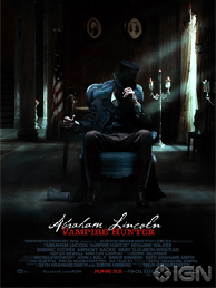In the past decade, mash-up novels have emerged as a popular genre. The term “mash-up” originally applied to computers and music. When referring to music, mash-ups are songs that use vocals and instrumental sequences from different tracks and combine them to make a new song. According to Duane Merrill in an article from IBM, when referring to computers, a mash-up “is an unusual or innovative composition of content (often from unrelated data sources), made for human (rather than computerized) consumption.” Merrill also explains that there are mapping, video, photo, search, shopping, and news mash-ups. WebSmart TV explains that the overall idea behind mash-ups is to combine information to create a new useful or entertaining product. This is not much different from the purpose of a mash-up novel.
The mash-up novel allows writers to explore classic novels by adding more popular elements to the pre-existing stories. While they incorporate some of the same elements as parodies, mash-up novels are a distinct genre. Parodies imitate a work of art with the purpose of mocking it, criticizing it, or commenting on some aspect of the original work. A parody can be cynical, satirical, or humorous. This is different from mash-ups, which are not always created with the purpose of poking fun at a work or some element of it but often explore whole new themes or genres in the rewriting of the original text.
Today, mash-up novels draw on two of the most popular genres among teens: science fiction and fantasy. In the past five years, bookstores have expanded their teen sections to include “teen paranormal romance” and “teen science fiction/fantasy” sub-sections. Novels like Twilight and The Hunger Games may be responsible for the increased popularity of fantasy and science fiction, and the publication of these genres is due to teens’ increased infatuation with the paranormal. Mash-ups have used this to their advantage by taking classics and putting a twist on them. The authors of mash-up novels incorporate science fiction and fantasy with classics to create stories that appeal to a younger audience.
A few noteworthy mash-up novels are Grahame-Smith’s Pride and Prejudice and Zombies, Ben H. Winters’ Android Karenina and Sense and Sensibility and Sea Monsters, and Lynn Messina’s Little Vampire Women. These mash-up novels draw on popular fantasy and science-fiction elements to create a more relatable, understandable, and often more humorous story.
This genre of novels is popular because it takes the familiar and presents it in a new way. In her New York Times review of Grahame-Smith’s Pride and Prejudice and Zombies, Jennifer Schuessler claims that “the culture industry has always looked for familiar (and uncopyrighted) works to feed on.” Schuessler also claims that these mash-ups work because Austen’s original works already have elements of satire and violence that emerge in the adaptations of the novels. Mash-up authors simply take what is already available, integrate popular elements, and make the story accessible to a modern audience. The authors expose teens—and even adults—to classics they might not have had an interest in before the novel was combined with fantasy or sci-fi.
In addition to influencing literature, the success of mash-up novels now transcends to the film industry. Abraham Lincoln: Vampire Hunter is now not only a mash-up novel, but it is a mash-up film as well. While not a completely new mash-up story, the film opens the mash-up genre to a wider audience and contributes to the existing dialogue between film and literature. The introduction of mash-ups to film provides filmmakers with a new genre of film to explore. Whether mash-up novels continue to flourish, or if mash-up movies take hold, the mash-up technique will continue to expand and influence many types of media because of the familiarity it provides.
Christine LaPlaca is a senior at the University of Mary Washington majoring in English and Asian Studies. The University of Mary Washington is home to the Kappa of Virginia chapter of Phi Beta Kappa.




